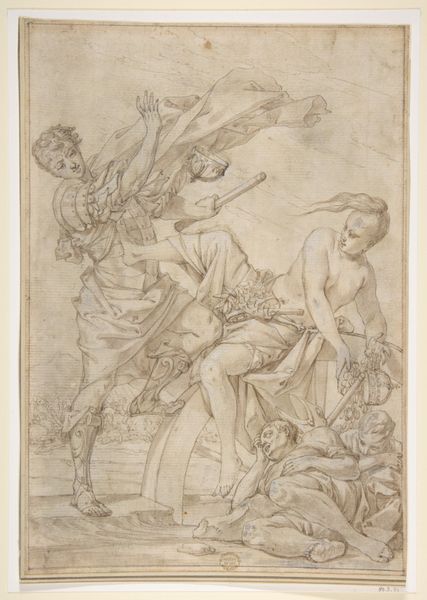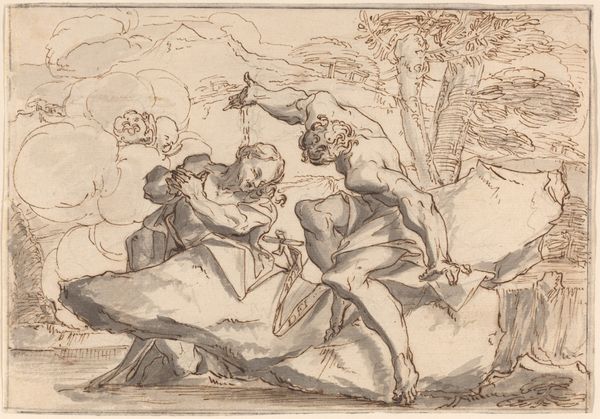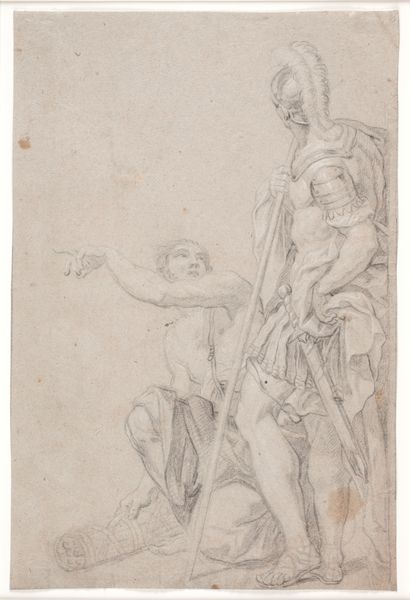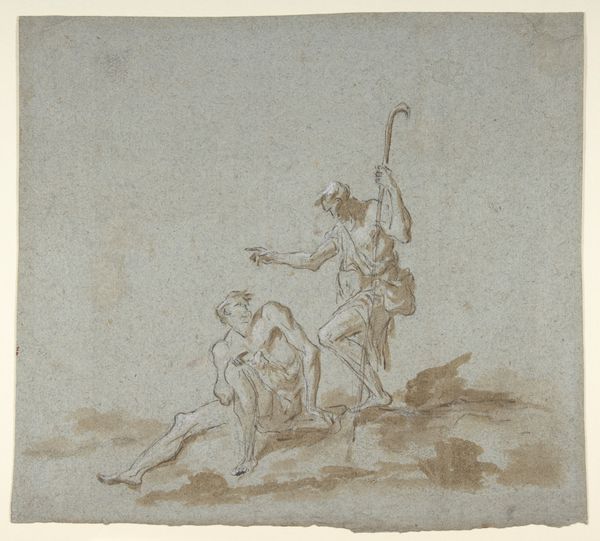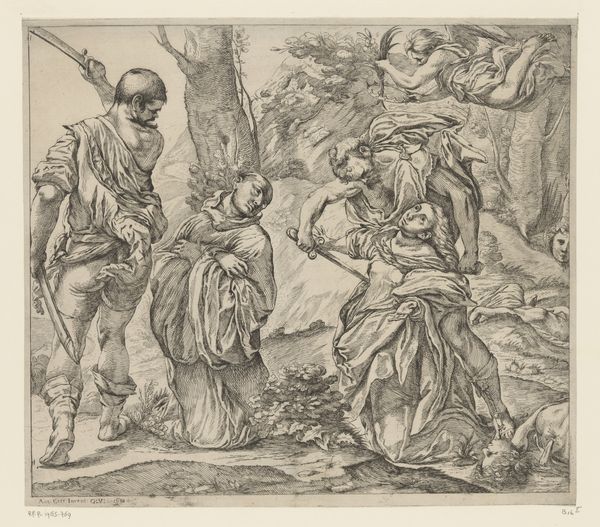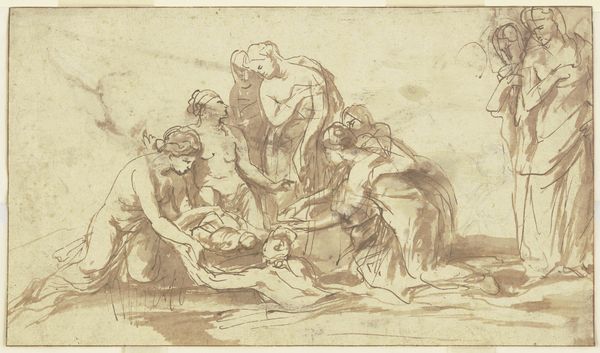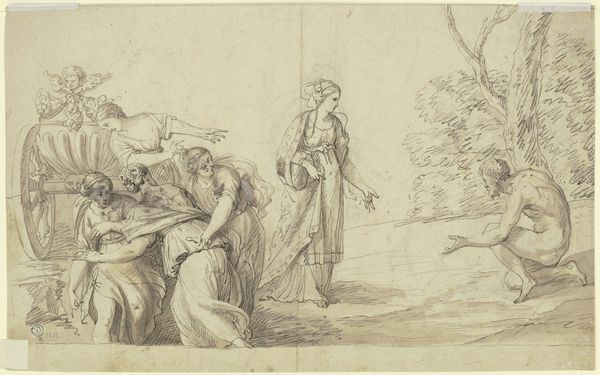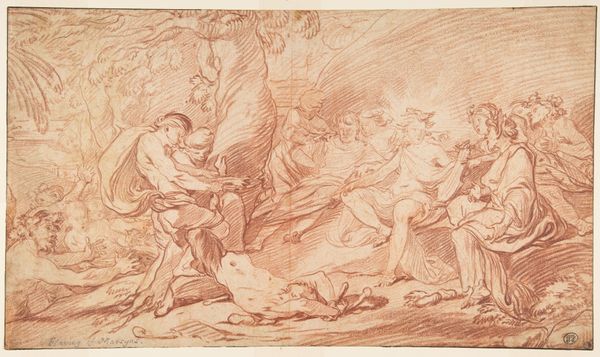
Ein Jüngling unter einem Baum sitzend wird vom Tod mit einem Pfeil bedroht, links am Boden liegen Dreschflegel, Hammer und Amboß 9 - 1614
0:00
0:00
Copyright: Public Domain
Editor: This drawing, created with ink, graphite, gouache, and chalk, by Isaak Major around 1614, depicts a youth threatened by Death. The somber, almost theatrical arrangement makes it difficult to decipher. What do you see in this piece, especially regarding its compositional structure? Curator: The piece is arresting formally. The dramatic diagonal formed by Death’s arrow juxtaposes the almost languid curve of the tree and the youth’s reclining posture. The textural variations – the rough bark against the smooth skin, for instance – introduce an appealing tension, despite the grim subject matter. Note how the tools are relegated to the lower left, rendered with almost diagrammatic precision, establishing a stark contrast between productive life and inevitable end. Editor: The contrast you point out is very apparent; Death appears intertwined in a physical struggle with life itself! Are we to think of it as both a symbol of life cut short and a social commentary on trades and work? Curator: Precisely! Moreover, consider the baroque style itself. It favored dynamic compositions, intense emotion, and dramatic use of light and shadow – or, in this case, variations of grey. This is about impact as much as message. Editor: So, it's a formal study of contrasts used to highlight themes of death? The arrow, the reclining figure, and even the discarded tools – they all work together. Curator: Absolutely. And understanding the composition helps to unlock some of the thematic possibilities within the drawing itself. What begins as illustrative expands, through considered formal choices, into something more universal. Editor: Thanks! It really is incredible how the details interact and transform our viewing experience. Curator: My pleasure. Always consider how form dictates function; even, and perhaps especially, in narrative art.
Comments
No comments
Be the first to comment and join the conversation on the ultimate creative platform.
